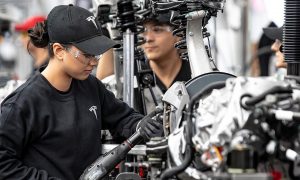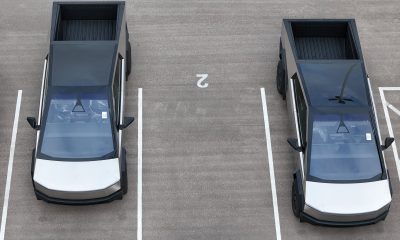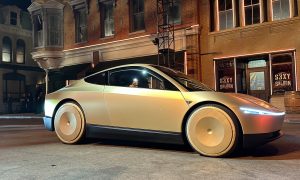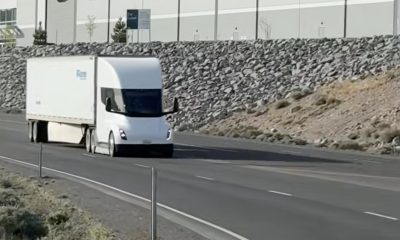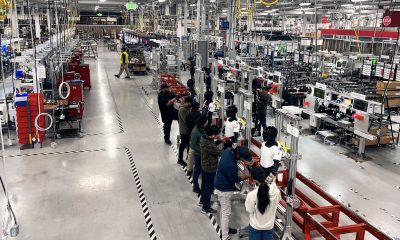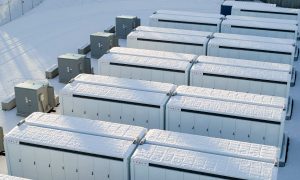News
Full Recap of Tesla’s 2015 Annual Shareholder Meeting
At the Tesla Annual Shareholder Meeting, chairman Elon Musk touched on a number of subjects, including cars, the GigaFactory, battery storage and space travel.
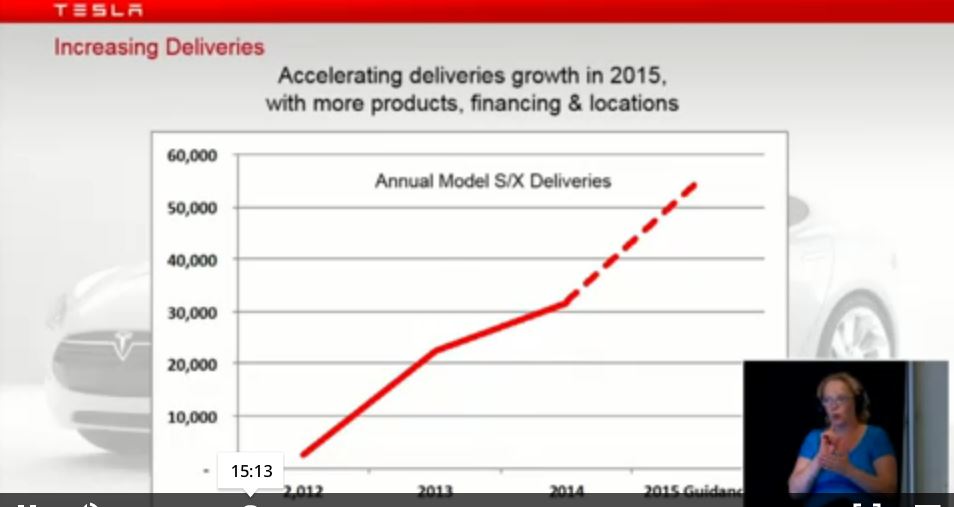
During his remarks at the Tesla annual shareholder meeting on Tuesday, chairman Elon Musk touched on a wide range of topics from the AutoPilot system, the GigaFactory, residential and utility scale grid storage, and life on Mars. Here’s a synopsis.
Car Stuff
Musk told the meeting that he anticipates sales volume will continue to grow 50% per year, on average, for the next several years. The company has opened a new casting and machining center near the Fremont factory. Moving production functions there has opened up room at the factory to install a new assembly line capable of producing 3 times as many cars as the current line. A new paint facility capable of handling up to 500,000 cars a year has also been installed.
The Model X is undergoing final pre-production tweaking and will start production in “3 to 4 months.” In response to a question, Musk said that mounting the battery pack low in the chassis makes the Model X one of the safest SUV’s on the road. He went on to say that, like the Model S, it will achieve some of the highest crash test ratings of any car on the road.
“[I]t’s turning out to be a really great car. I think the Model X may arguably be a better SUV than the Model S is as a sedan. We want to make sure obviously that some of the key features of the Model X, particularly the Falcon Wing door and the way the second row seats are done …is…just right, and provide true functionality and true value improvements versus just sort of feeling gimmicky. It’s got to be a genuine improvement in utility and aesthetics, so getting those final nuances right for the Model X is what we’re focused on right now.”
When asked about the affordable mass-market Model 3, he said it would be available only with a single motor at first to keep costs down but would be offered in a dual motor version as well.
He did have exciting news about the Supercharger network. The company is fitting solar panels to as many Supercharger locations as possible. He assured the audience that those that could not be converted to solar power would soon get their electricity only from renewable power sources.
Musk also said the company has created a new liquid cooled charging cord that is significantly thinner and more flexible than the one used now. Not only does liquid cooling make the cable more elegant, it will permit the use of higher powered Supercharger facilities in the future.
He emphasized that the system will continue to expand in North America and other countries to permit Tesla owners to enjoy free long distance driving for life. He did say that owners who use Superchargers for all their daily charging can expect to receive a “note” from the company.
With regard to the AutoPilot suite of autonomous driving features, Musk indicated that the company is busy testing and upgrading the system. “We’re making gradual progress towards what I’d say is a releasable bit of software. But it is quite a tricky thing and we want to make sure that our testing is exhaustive before we release the software. But if we keep making progress, I think we may be able to get it out to all the access customers which is sort of our public beta program around the end of this month.”
Full implementation is not expected for about 3 years, with a lot depending on how regulators in the US and abroad react to it. He said that the system at this point is intended to function like the auto pilot in airplanes — there to help but not to allow drivers to sleep through their journey to arrive alert and refreshed at their destination…..yet.
Musk admitted that interest in battery swapping was far lower than expected. He indicated that the company is focusing more on improving Supercharger performance and less on building battery swap locations.
Tesla PowerWall
One of the biggest announcements of the day concerns the Tesla PowerWall. Some critics have chirped that the units introduced to great fanfare in April were too small to be worth the cost. “I am very happy to announce that we’ve dramatically increased the power capability of the Powerwall. So it’s actually going to go from having 2 kilowatts steady, 3.3 kilowatt peak to a 7 kilowatt power, 5 kilowatt steady, price is unchanged. So, it basically more than doubled the power output of the Powerpack and the price is going to stay the same.”
The company will prioritize deliveries to people who already have a residential solar system or who are installing one. Why? Because an inverter will be already included in their system, meaning adding a PowerWall will cost only about $3,500 for the unit and about $500 for installation. That’s huge.
But even with that announcement, Musk admitted that the PowerWall may not make economic sense for most customers in the US because the differences between the cost of electricity during a 24 hour period are usually not large enough for there to be a pay back on the cost of the system in a reasonable period of time. He cites Germany, Australia and Hawaii as markets where the PowerWall makes more economic sense.
The company focus is on grid scale storage, which it expects will account for 80% of its stationary battery business. “That’s where the economics are very compelling because there is an important difference between price and cost. The cost to the utilities of between day and night is quite substantial because the power usage is often sort of 2:1 at least if not greater than 2:1, sometimes substantially greater than 2:1 between peak day usage and trough night usage.”
Musk told the audience that utility companies look favorably on using Tesla battery storage units because they are more compact than what competitors offer, so they can fit into the footprint of existing substations without the need to acquire more land and the permitting issues that may create. He says utilities are just like residential customers — they appreciate that the Tesla units are basically “plug and play” ready, with no hassles or headaches.
The GigaFactory
Musk said the GigaFactory was coming along smoothly, with production expected to begin next year with full capacity expected within 3 years. In response to a question from the audience, he responded, “Our focus right now is just making sure that we build the Gigafactory version one correctly and that’s going to be quite a difficult challenge over the next few years. We’ll have the first part of it active next year but then we want to try to get to full production in roughly three years…that’s going to be quite a challenge. And I think once we get to that point we want to figure out where to put Gigafactory Two and Three.”
He says the GigaFactory will have the capacity to build 50 gigawatt-hours of batteries a year. “And that should allow for 500,000 cars to be produced a year plus have 15 gigawatt-hours left over for stationary. The way it’s looking, demand for stationary is higher than expected, so we’re looking at potentially expanding the output capability of the Gigafactory to meet the higher demand for stationary.”
SpaceX
An audience member asked when SpaceX would be going public and Musk responded that a SpaceX IPO was a long way off, primarily because the stock market is focused on quarterly reports and has an attention span limited to 1 to 2 years maximum. He said the timeline for SpaceX was quite a bit beyond that. Then he dropped this bomb:
“I’m trying to build a city on Mars and that ends up sacrificing profitability for a really long time. I think it would be not super loved by the public markets. I’d expect with SpaceX that we will probably go public once we will have a regular flights to Mars.”
The Take Away
One stockholder asked Elon Musk what his goals for the company are. He gave this answer, which may serve as the overarching statement that underlies everything he and his various companies are attempting to accomplish.
“Our goal at Tesla is pretty straight forward; it’s really to accelerate the advent of sustainable energy and particularly sustainable transport. So in order for humanity to have a good future or for life…we have to figure out how to make that future sustainable, meaning not to have crazy amounts of CO2 in the atmosphere and ultimately get into situation of hydrocarbon scarcity, which would be economically disastrous.
“So, that’s what we’re focused on. Our primary goal is to accelerate the advent of sustainable transport and then, with the batteries, help the advent of sustainable energy production.”
Quoted material is courtesy of Seeking Alpha transcription service.
Elon Musk
Elon Musk is now a remote DOGE worker: White House Chief of Staff
The Tesla and SpaceX CEO Elon Musk is no longer working from the West Wing.
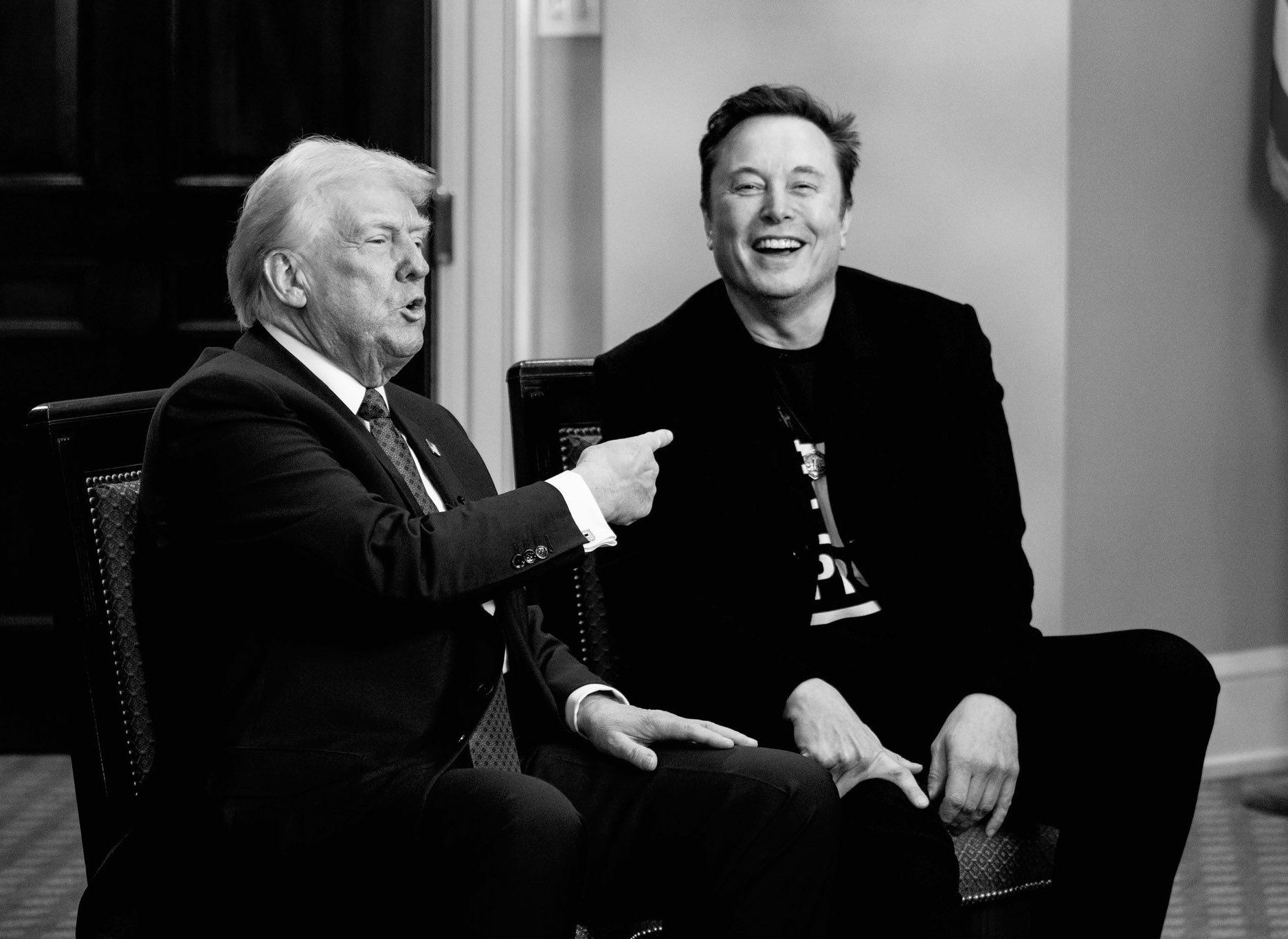
In a conversation with the New York Post, White House Chief of Staff Susie Wiles stated that Tesla and SpaceX CEO Elon Musk is no longer working from the West Wing.
As per the Chief of Staff, Musk is still working for DOGE—as a remote worker, at least.
Remote Musk
In her conversation with the publication, Wiles stated that she still talks with Musk. And while the CEO is now working remotely, his contributions still have the same net effect.
“Instead of meeting with him in person, I’m talking to him on the phone, but it’s the same net effect,” Wiles stated, adding that “it really doesn’t matter much” that the CEO “hasn’t been here physically.” She also noted that Musk’s team will not be leaving.
“He’s not out of it altogether. He’s just not physically present as much as he was. The people that are doing this work are here doing good things and paying attention to the details. He’ll be stepping back a little, but he’s certainly not abandoning it. And his people are definitely not,” Wiles stated.
Back to Tesla
Musk has been a frequent presence in the White House during the Trump administration’s first 100 days in office. But during the Q1 2025 Tesla earnings call, Musk stated that he would be spending substantially less time with DOGE and substantially more time with Tesla. Musk did emphasize, however, that DOGE’s work is extremely valuable and critical.
“I think I’ll continue to spend a day or two per week on government matters for as long as the President would like me to do so and as long as it is useful. But starting next month, I’ll be allocating probably more of my time to Tesla and now that the major work of establishing the Department of Government Efficiency is done,” Musk stated.
Elon Musk
Tariff reprieve might be ‘Tesla-friendly,’ but it’s also an encouragement to others
Tesla stands to benefit from the tariff reprieve, but it has some work cut out for it as well.
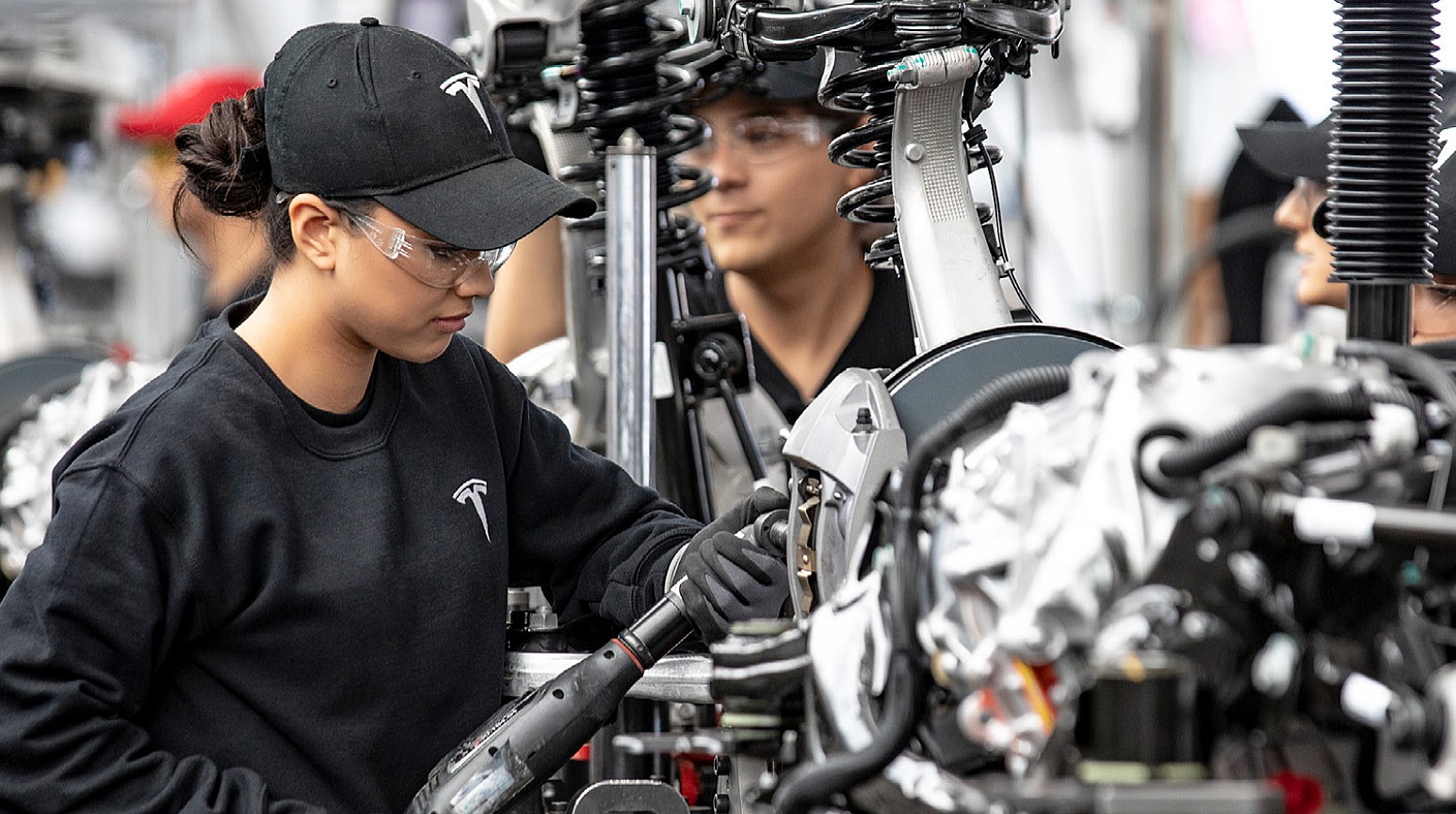
After Secretary of Commerce Howard Lutnick made adjustments to the automotive tariff program that was initially announced, many quickly pointed to the reprieve as “Tesla-friendly.”
While that may be the case right now, it was also a nudge of encouragement to other companies, Tesla included, to source parts from the U.S. in an effort to strengthen domestic manufacturing. Many companies are close, and it will only take a handful of improvements to save themselves from tariffs on their cars as well.
Yesterday, Sec. Lutnick confirmed that cars manufactured with at least 85 percent of domestic content will face zero tariffs. Additionally, U.S. automakers would receive credit up to 15 percent of the value of vehicles to offset the cost of imported parts.
Big Tesla win? Sec Lutnick says cars with 85% domestic content will face zero tariffs
“This is ‘finish your cars in America and you win’,” Lutnick said.
Many were quick to point out that only three vehicles currently qualify for this zero-tariff threshold: all three are Teslas.
However, according to Kelley Blue Book’s most recent study that revealed who makes the most American cars, there are a lot of vehicles that are extremely close to also qualifying for these tariff reductions.
Tesla has three vehicles that are within five percent, while Ford, Honda, Jeep, Chevrolet, GMC, and Volkswagen have many within just ten percent of the threshold.
Tesla completely dominates Kogod School’s 2024 Made in America Auto Index
It is within reach for many.
Right now, it is easy to see why some people might think this is a benefit for Tesla and Tesla only.
But it’s not, because Tesla has its Cybertruck, Model S, and Model X just a few percentage points outside of that 85 percent cutoff. They, too, will feel the effects of the broader strategy that the Trump administration is using to prioritize domestic manufacturing and employment. More building in America means more jobs for Americans.
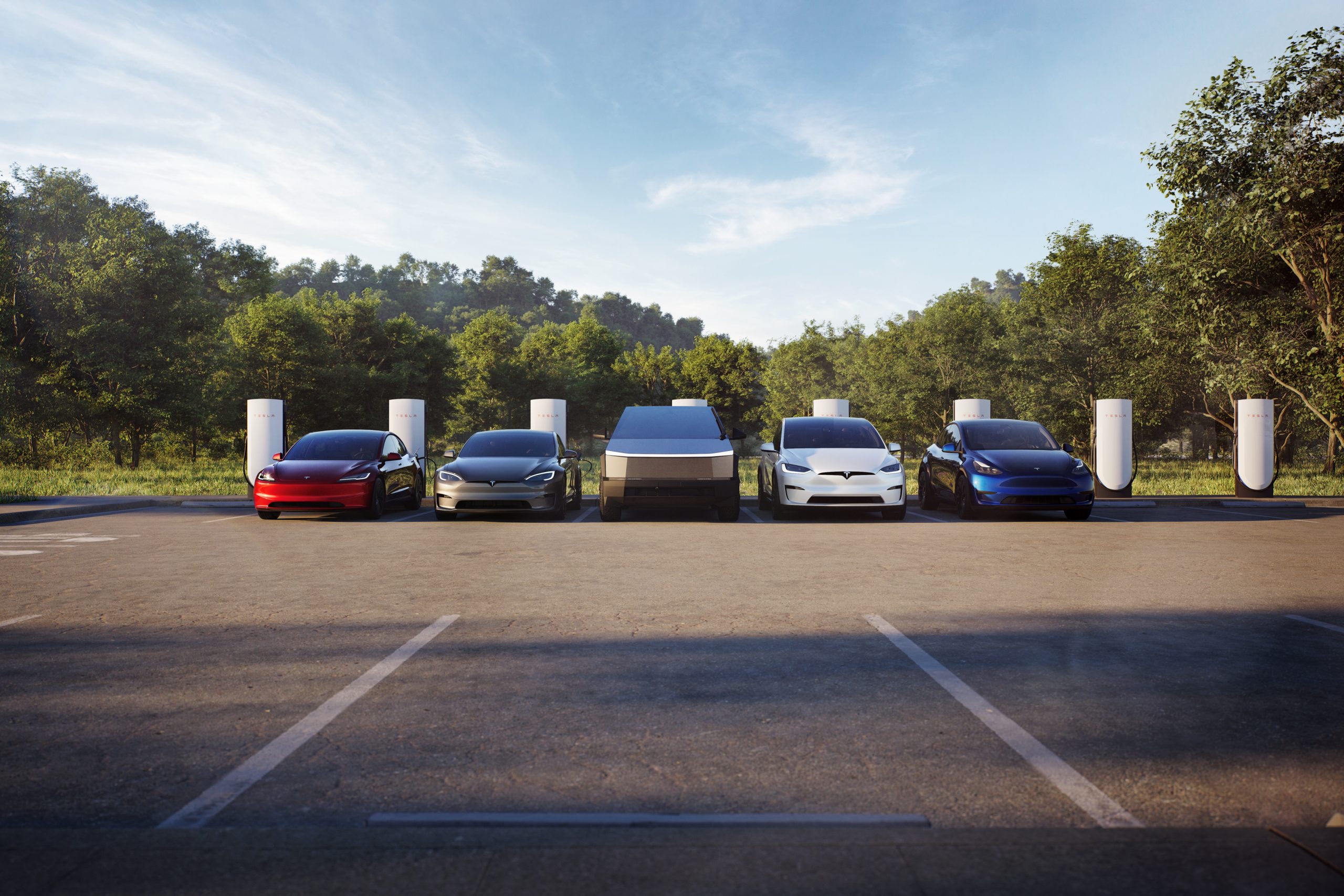
Credit: Tesla
However, other companies that are very close to the 85 percent cutoff are only a few components away from also saving themselves the hassle of the tariffs.
Ford has the following vehicles within just five percent of the 85 percent threshold:
- Ford Mustang GT automatic (80%)
- Ford Mustang GT 5.0 (80%)
- Ford Mustang GT Coupe Premium (80%)
Honda has several within ten percent:
- Honda Passport All-Wheel-Drive (76.5%)
- Honda Passport Trailsport (76.5)
Jeep has two cars:
- Jeep Wrangler Rubicon (76%)
- Jeep Wrangler Sahara (76%)
Volkswagen has one with the ID.4 AWD 82-kWh (75.5%). GMC has two at 75.5% with the Canyon AT4 Crew Cab 4WD and the Canyon Denali Crew Cab 4WD.
Chevrolet has several:
- Chevrolet Colorado 2.7-liter (75.5%)
- Chevrolet Colorado LT Crew Cab 2WD 2.7-liter (75.5%)
- Chevrolet Colorado Z71 Crew Cab 4WD 2.7-liter (75.5%)
These companies are close to reaching the 85% threshold, but adjustments need to be made to work toward that number.
Anything from seats to fabric to glass can be swapped out for American-made products, making these cars more domestically sourced and thus qualifying them for the zero-tariff boundary.
Frank DuBois of American University said that manufacturers like to see stability in their relationships with suppliers and major trade partners. He said that Trump’s tariff plan could cause “a period of real instability,” but it will only be temporary.
Now is the time to push American manufacturing forward, solidifying a future with more U.S.-made vehicles and creating more domestic jobs. Tesla will also need to scramble to make adjustments to its vehicles that are below 85%.
News
Tesla Cybertruck RWD production in full swing at Giga Texas
Videos of several freshly produced Cybertruck LR RWD units were shared on social media platform X.
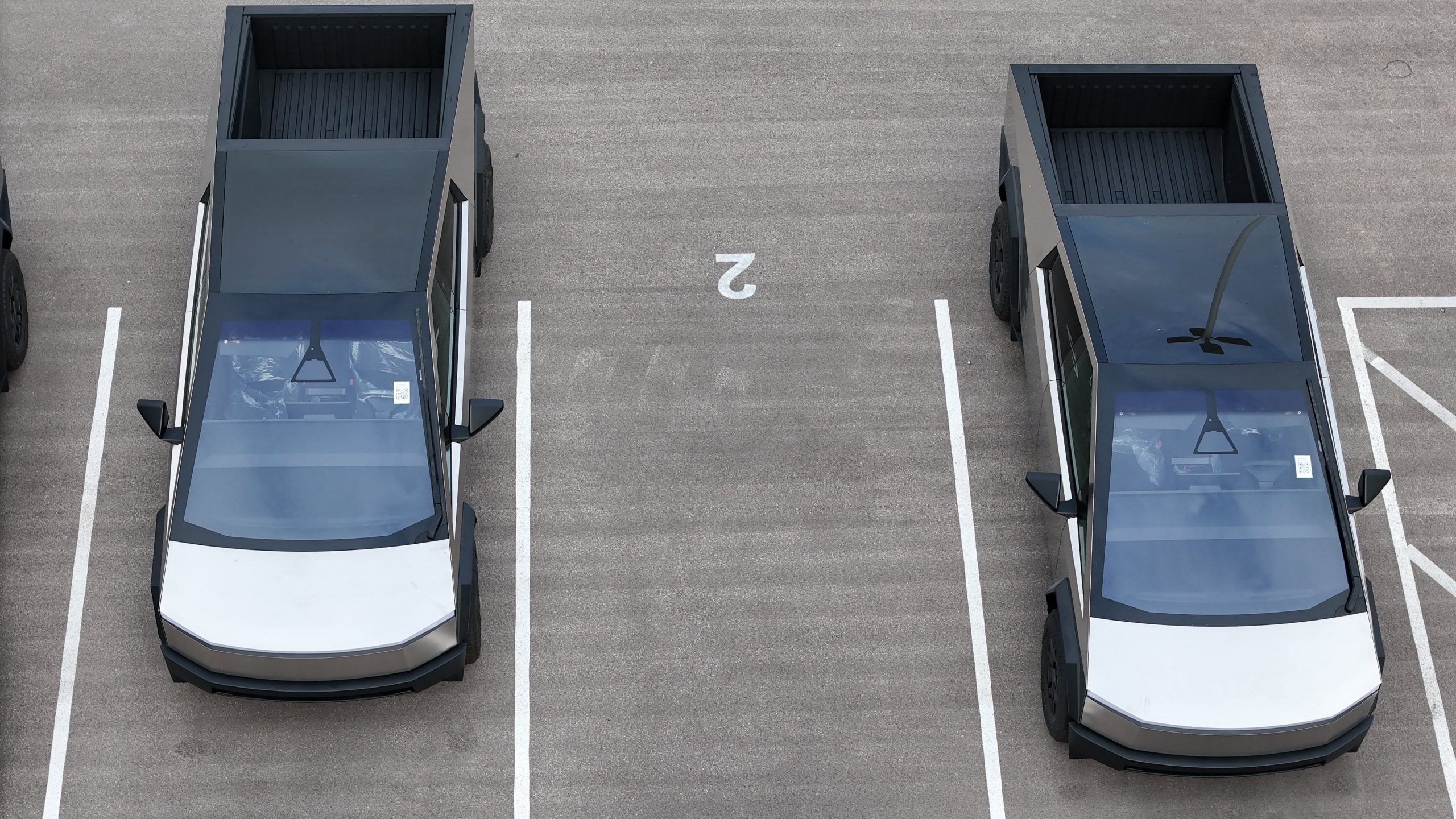
It appears that Tesla is indeed ramping the production of the Cybertruck Long Range Rear Wheel Drive (LR RWD), the most affordable variant of the brutalist all-electric pickup truck.
Videos of several freshly produced Cybertruck LR RWD units were shared on social media platform X.
Giga Texas Footage
As per longtime Tesla watcher Joe Tegtmeyer, Giga, Texas, was a hotbed of activity when he conducted his recent drone flyover. Apart from what seemed to be Cybercab castings being gathered in the complex, a good number of Cybertruck LR RWD units could also be seen in the facility’s staging area. The Cybertruck LR RWD units are quite easy to spot since they are not equipped with the motorized tonneau cover that is standard on the Cybertruck AWD and Cyberbeast.
The presence of the Cybertruck LR RWD units in Giga Texas’ staging area suggests that Tesla is ramping the production of the base all-electric pickup truck. This bodes well for the vehicle, which is still premium priced despite missing a good number of features that are standard in the Cybertruck AWD and Cyberbeast.
Cybertruck Long Range RWD Specs
The Cybertruck LR RWD is priced at $69,990 before incentives, making it $10,000 more affordable than the Cybertruck AWD. For its price, the Cybertruck Long Range RWD offers a range of 350 miles per charge if equipped with its 18” standard Wheels. It can also add up to 147 miles of range in 15 minutes using a Tesla Supercharger.
Much of the cost-cutting measures taken by Tesla are evident in the cabin of the Cybertruck LR RWD. This could be seen in its textile seats, standard console, seven-speaker audio system with no active noise cancellation, and lack of a 9.4” second-row display. It is also missing the motorized tonneau cover, the 2x 120V and 1x 240V power outlets on the bed, and the 2x 120V power outlets in the cabin. It is also equipped with an adaptive coil spring suspension instead of the adaptive air suspension in the Cybertruck AWD and Cyberbeast.
-

 News1 week ago
News1 week agoTesla’s Hollywood Diner is finally getting close to opening
-

 Elon Musk2 weeks ago
Elon Musk2 weeks agoTesla doubles down on Robotaxi launch date, putting a big bet on its timeline
-

 News5 days ago
News5 days agoTesla is trying to make a statement with its Q2 delivery numbers
-

 Investor's Corner1 week ago
Investor's Corner1 week agoLIVE BLOG: Tesla (TSLA) Q1 2025 Company Update and earnings call
-
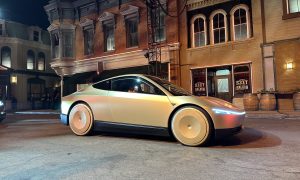
 Elon Musk2 weeks ago
Elon Musk2 weeks agoTesla reportedly suspended Cybercab and Semi parts order amid tariff war: Reuters
-
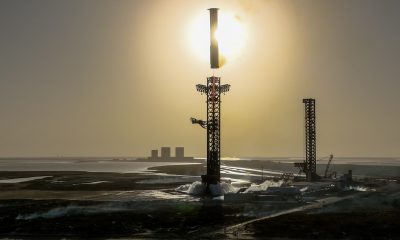
 SpaceX2 weeks ago
SpaceX2 weeks agoSpaceX pitches subscription model for Trump’s Golden Dome
-
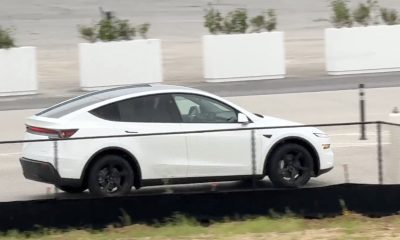
 News2 weeks ago
News2 weeks agoDriverless Teslas using FSD Unsupervised are starting to look common in Giga Texas
-
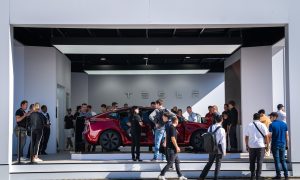
 News3 days ago
News3 days agoNY Democrats are taking aim at Tesla direct sales licenses in New York



